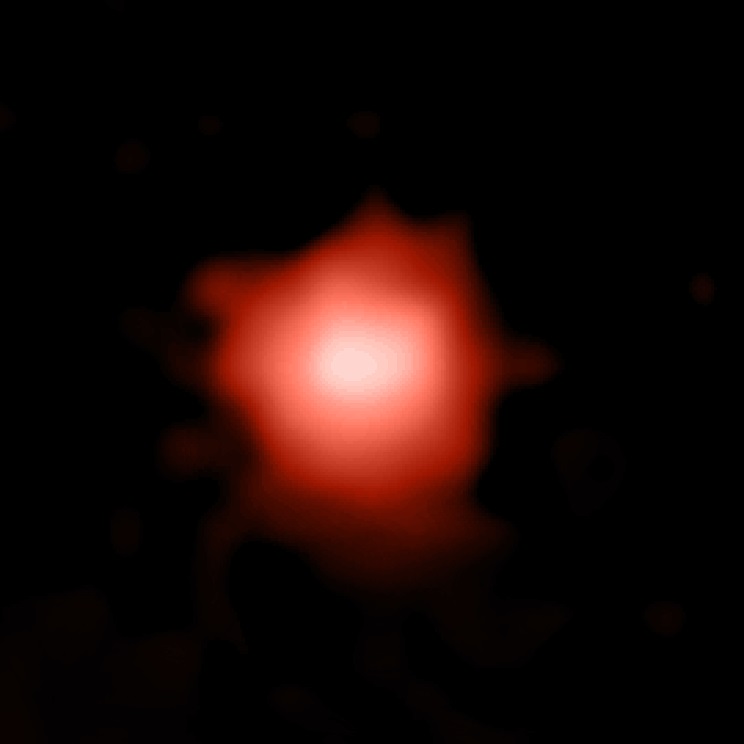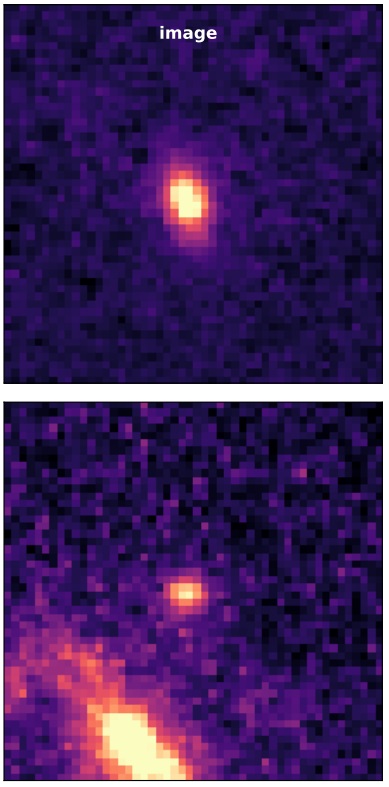
It didn’t take long for this record to be broken again! Click here for updates.
The James Webb Space Telescope hasn’t been scientifically active for even a month yet. But it’s already breaking all kinds of barriers. In a new paper still being peer reviewed – published July 20, 2022 on arXiv – a team of scientists claims that Webb has now captured the oldest galaxy we’ve ever seen. That galaxy, named GLASS-z13, existed when the universe was just 300 million years old.
This galaxy is old, the oldest yet. But, paradoxically, we might also say this same galaxy is youngest we’ve ever seen. More about that below.
Remember, light doesn’t travel infinitely fast. So when we see objects from across the universe, we’re looking far back in time, as they were when their light left them. As the light of distant galaxies travels across billions of years of space and time, the light is shifted toward the red end of the electromagnetic spectrum. The amount of redshift scientists see is symbolized by the letter “z.”
Before Webb, the farthest galaxies previously known in our universe were GN-z11 and HD1. As you can tell from GN-z11’s name, its redshift factor – or “z” – was 11. Scientists said it existed when the universe was about 400 million years old. HD1 was discovered in April, however, and it was the record holder for just a few months. Now it appears that GLASS-z13 existed at a time some 30 million years before HD1.
James O’Donoghue took to Twitter to explain more about this distant discovery:
When GLASS-z13 emitted the light we see today, it was about 3 billion light years away from us (or whatever 'us' was back then). The 3 billion light years of space that once separated us from GLASS-z13 has expanded to over 33 billion light years today!
— Dr. James O'Donoghue (@physicsJ) July 21, 2022
Oldest galaxy visible in infrared
Webb and its infrared vision was crucial to finding this galaxy. Sarafina Nance of UC Berkeley explained in her TikTok video the significance of the discovery:
@starstrickensf #greenscreen #fyp #jwst #nasa #spacetok #physics #astronomy ? Cornfield Chase – Dorian Marko

Old and tiny galaxies
GLASSz-13 isn’t the only distant galaxy that the astronomers are reviewing. They’re also inspecting a galaxy named GLASSz-11, which is also a candidate for one of the earliest galaxies we’ve ever seen. Both of these galaxies are tiny in contrast to the galaxies we see today, such as our home galaxy, the Milky Way. The Milky Way is about 100,000 light-years in diameter.
Compare that to GLASSz-13 and GLASSz-11, which are 1,600 and 2,300 light-years across, respectively. Both galaxies have a mass of about a billion suns. That’s in contrast to about 100 to 400 billion stars for our Milky Way galaxy.
Scientists spotted GLASSz-11 while investigating GLASSz-13. The two galaxies appear in the same direction in space. The scientists don’t think that finding this second, more distant galaxy was just luck. As they said in their paper:
These two objects already place novel constraints on galaxy evolution in the cosmic dawn epoch [the period from about 50 million years to one billion years after the Big Bang]. They indicate that the discovery of GNz11 was not simply a matter of good fortune, but that there is likely a population of UV luminous sources with very high star-formation efficiencies…
In other words, there are likely more galaxies at that distance that are forming stars, and that Webb – with its sensitivities in the infrared part of the spectrum – will be able to see.

Oldest galaxy … or youngest?
So is GLASSz-13 the oldest galaxy we’ve ever seen … or the youngest? We’re looking back in time at something that existed a long time ago, predating us by billions of years. In that sense, this galaxy is very old.
But we’re also looking back in time to when the universe itself was very young, just a few hundred million years after the Big Bang. In that sense, this galaxy was young and one of the first galaxies to form. In this way, we can say the galaxy is both one of the oldest and youngest we’ve ever seen.
Whether you call them old or young, these galaxies will help astronomers understand the very first galaxies in the universe: when they appeared, how they formed, and more. Hang on, it’s going to be a wild ride!
Bottom line: The James Webb Space Telescope imaged a galaxy that existed when the universe was just 300 million years old. As of July 21, 2022, GLASS-z13 is the oldest galaxy we’ve ever seen.
Source: Two Remarkably Luminous Galaxy Candidates at z ~ 11-13 Revealed by JWST











